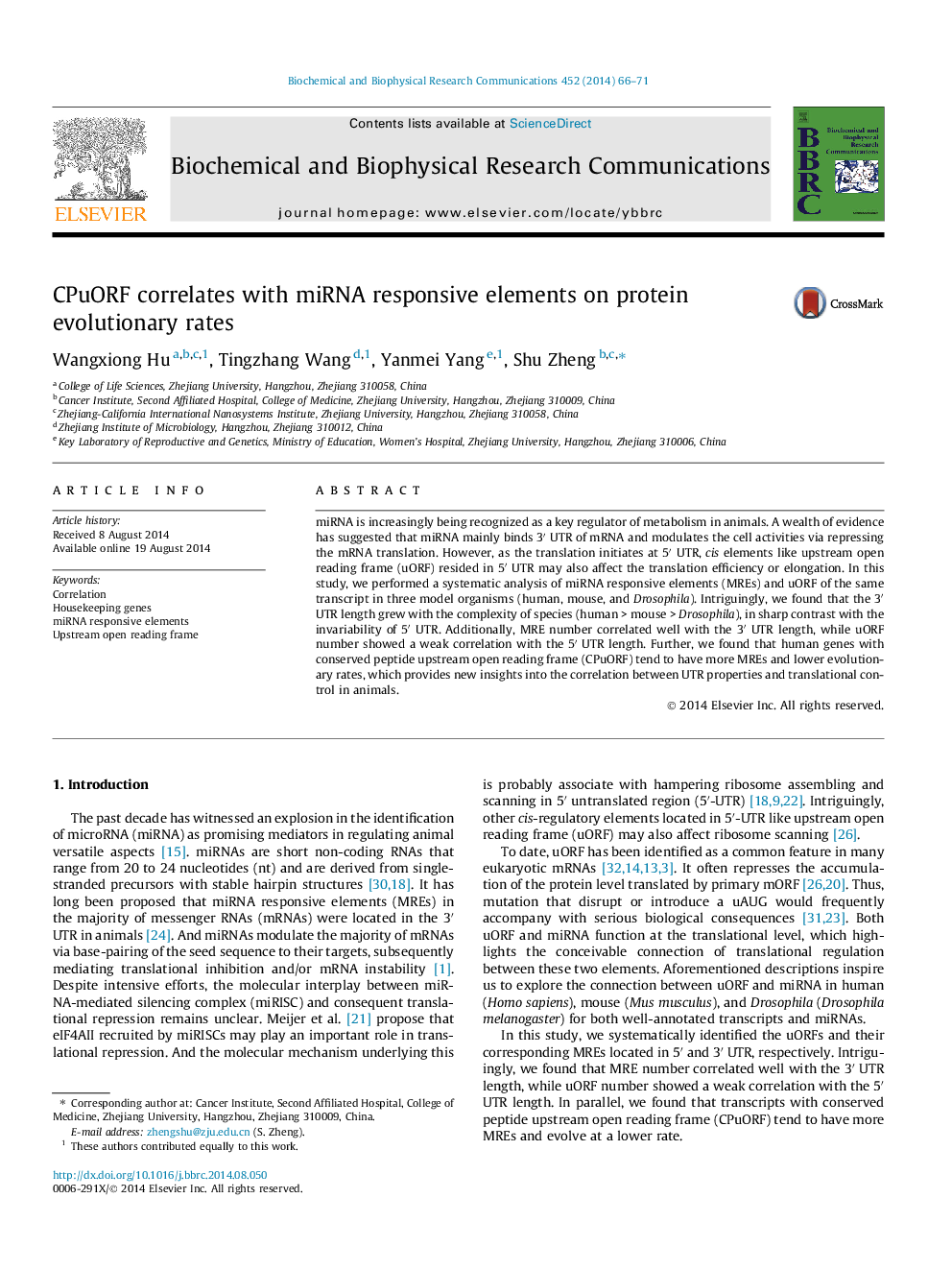| Article ID | Journal | Published Year | Pages | File Type |
|---|---|---|---|---|
| 10754460 | Biochemical and Biophysical Research Communications | 2014 | 6 Pages |
Abstract
miRNA is increasingly being recognized as a key regulator of metabolism in animals. A wealth of evidence has suggested that miRNA mainly binds 3ⲠUTR of mRNA and modulates the cell activities via repressing the mRNA translation. However, as the translation initiates at 5ⲠUTR, cis elements like upstream open reading frame (uORF) resided in 5ⲠUTR may also affect the translation efficiency or elongation. In this study, we performed a systematic analysis of miRNA responsive elements (MREs) and uORF of the same transcript in three model organisms (human, mouse, and Drosophila). Intriguingly, we found that the 3ⲠUTR length grew with the complexity of species (human > mouse > Drosophila), in sharp contrast with the invariability of 5ⲠUTR. Additionally, MRE number correlated well with the 3ⲠUTR length, while uORF number showed a weak correlation with the 5ⲠUTR length. Further, we found that human genes with conserved peptide upstream open reading frame (CPuORF) tend to have more MREs and lower evolutionary rates, which provides new insights into the correlation between UTR properties and translational control in animals.
Related Topics
Life Sciences
Biochemistry, Genetics and Molecular Biology
Biochemistry
Authors
Wangxiong Hu, Tingzhang Wang, Yanmei Yang, Shu Zheng,
